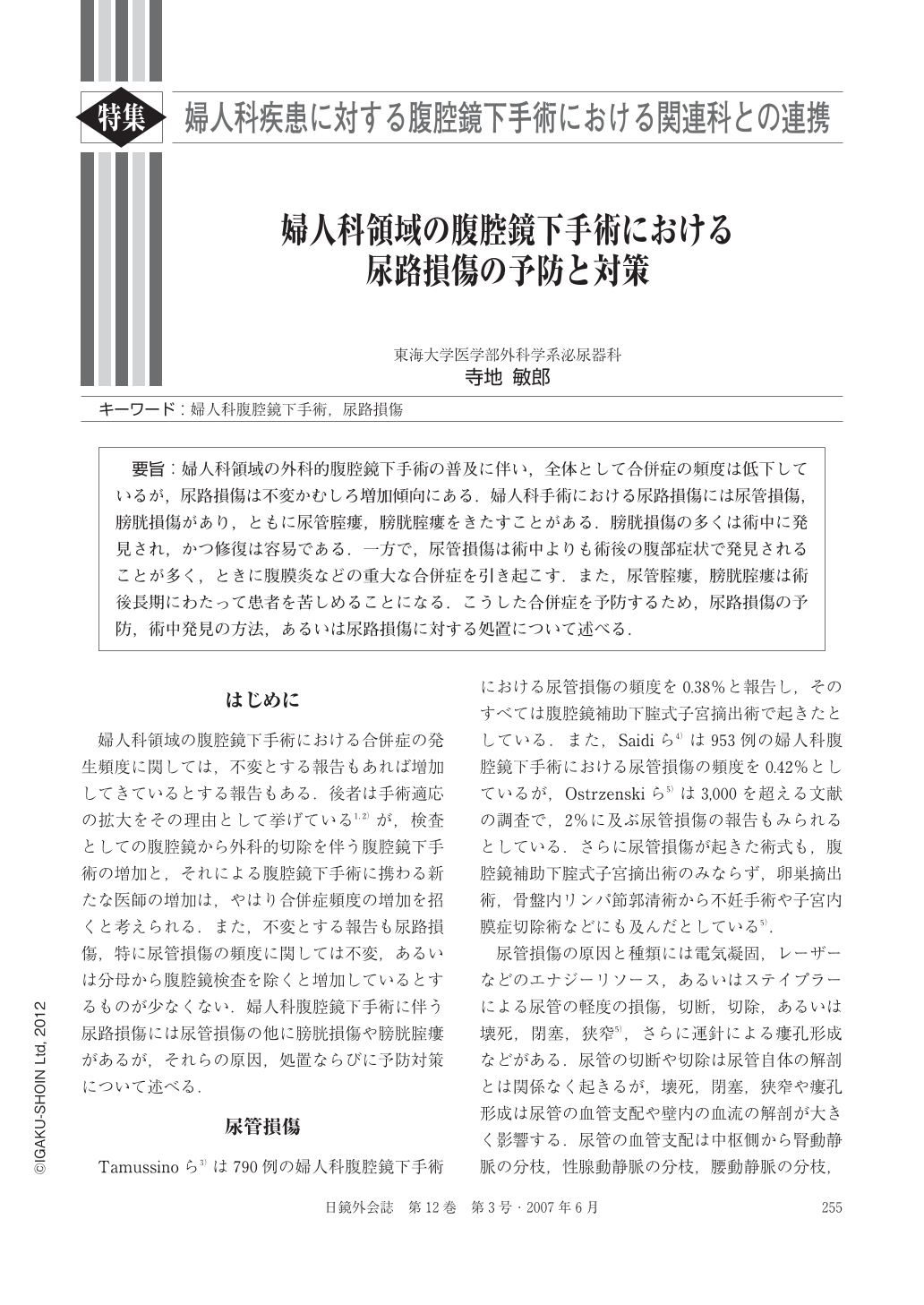Japanese
English
- 有料閲覧
- Abstract 文献概要
- 1ページ目 Look Inside
- 参考文献 Reference
要旨:婦人科領域の外科的腹腔鏡下手術の普及に伴い,全体として合併症の頻度は低下しているが,尿路損傷は不変かむしろ増加傾向にある.婦人科手術における尿路損傷には尿管損傷,膀胱損傷があり,ともに尿管腟瘻,膀胱腟瘻をきたすことがある.膀胱損傷の多くは術中に発見され,かつ修復は容易である.一方で,尿管損傷は術中よりも術後の腹部症状で発見されることが多く,ときに腹膜炎などの重大な合併症を引き起こす.また,尿管腟瘻,膀胱腟瘻は術後長期にわたって患者を苦しめることになる.こうした合併症を予防するため,尿路損傷の予防,術中発見の方法,あるいは尿路損傷に対する処置について述べる.
While overall complication rate of gynecologic major laparoscopic surgery has decreased, urinary complication rate has been stable or still increasing. Urinary complications involve bladder injury and ureteral injury, which rarely result in vesicovaginal and ureterovaginal fistulas, respectively. Bladder injury is easily detected and repaired intraoperatively, however, ureteral injury is often detected postoperatively by abdominal symptoms, and sometimes causes serious complications like peritonitis. When ureterovaginal or vesicovaginal fistula has occurred unfortunately, the patients suffer from it for a long time. Prevention and intraoperative detection of urinary tract injuries, and management of them are discussed to prevent these complications.

Copyright © 2007, JAPAN SOCIETY FOR ENDOSCOPIC SURGERY All rights reserved.


